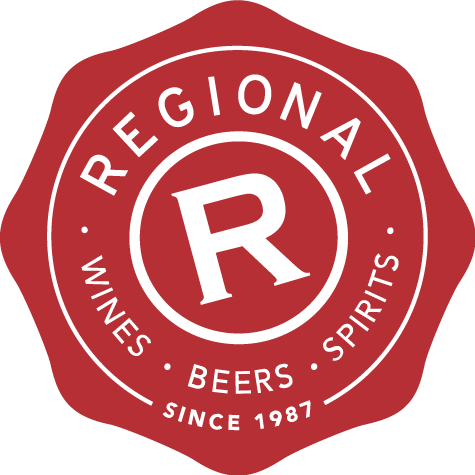
John Shearlock reports back from the Elephant Hill tasting at Regional Wines
When Steve Skinner started at Elephant Hill back in 2006, his first move was to rip out the struggling Bordeaux varieties at the Te Awanga site and set in motion the acquisition of new vineyards in the Bridge Pa and Gimblett Gravels districts. This was the beginning of a simple plan, but a plan nevertheless to diversify in every which way possible, drawing the best from the complexities of Hawke’s Bay's sub-regions, allowing Steve to make the best wines he can.
You only get one shot per vintage at making wine, but if you strip each vineyard back to its base components of blocks, rows and parcels, fermenting each separately, then essentially you are making hundreds of wines each vintage, learning everything you can about each vineyard and creating a lifetime of wines in only a short period.
In doing so, one gets to know one’s vineyards, what sort of fruit they provide and how they respond in each vintage. This is a fractal approach to winemaking working at increasing levels of complexity. A region divides into subregions, and then into vineyards which give way to rows until eventually you're working with each vine separately, and learning, for example, that those in the dips and troughs perform differently in the warm vintages.
In the same respect, this approach also provides the ultimate way of spreading one's bets to insure against investment. With a string of sites that can be subdivided further and further, a winery’s resilience to climate and vintage variation is greatly increased. In a warm vintage the cooler coastal sites of Te Awanga will deliver the goods, in a wetter vintage, the free draining soils of the Gimblett Gravels will come up trumps, and so on. The wines may change each vintage, but this is a small trade off for the guarantee of quality and also provides a level of variation that true wine lovers crave. We don’t want to drink the same juice year in year out, we want to be kept guessing and kept on our toes. We want to be challenged, and variation provides the perfect incentive for buying new vintages.
This was expressed beautifully at the tasting with two verticals of the Arivata and Hieronymus that spanned the consecutive vintages of 2015,’14 and ‘13. The wines were all so different, personalities that Steve had coaxed out of his vineyards by letting them speak and reflect each vintage.
The Airavata Syrah marries the masculin fruit from Gimblett Gravels with the feminine florals and fine tannins of coastal Te Awanga fruit. Two sites only 25K apart but with vastly different microclimates. The 2015, blended from 20 different ferments, is a racey electric wine, driven and precise with fruit, acid and tannin in fine balance. The ‘14 is riper, a warmer vintage that Steve countered with a higher proportion of whole bunch to sharpen it up, and then once again round off with 27 months in oak. The results are almost Burgundian with lifted pinot-esque red and black berry fruits and only a smattering of muted black pepper. The '13 on the other hand is aromatic and spicy, round and grippy in the mouth and quintessentially Syrah.
The three Hieronymus were even more individually distinct, the perfect example of a winemaker using all his tools to achieve his very best. The varietal composition is unique each vintage with Steve drawing on the best performing varieties, and although vastly different in flavour profile - they show superb consistency in quality.
The ‘15 is very much a Hawke's Bay twist on the Bordeaux blend with a small percentage of tempranillo added to the mix. Similarly to the 2015 Airavata, this is a precise wine that has it all - ripe fruit and racy acidity balanced by fine grain tannins. The ‘14 is its antithesis. Big and broody, round and full, this is principally a blend of Malbec and Merlot, but with a small component of Cabernet Sauvignon blended in for its balancing acidity and brightness. Its warm embrace is hard to refuse and the riper fruit makes it the most approachable of the three. The ‘13 was the most Bordeaux-like, with 60% Cabernet from the Gimblett Gravels imbuing the wine with layers of cassis that balanced nicely with the plummy darkness of Merlot and Malbec from Bridge Pa.
Steve's master plan has also instigated a gradual premiumisation at Elephant Hill, that saw a deliberate switch to lower yields and a focus on the top end in 2016, and which instantly paid dividends in the following vintage. 2017 was a shocker in the Hawke's Bay, but the move to lower yields meant earlier ripeness and earlier fruit picking and consequently the grapes missed the worst of the weather. You need a bit of luck when making wine and this is a great example of how you can make your own luck.
The focus on the premium has also seen the addition of what could be the final piece in the Jigsaw. In 2015 Elephant Hill launched the Series wines - single vineyard wines only released in exceptional vintages. These are the antithesis of the wines blended across multiple sites and provide yet another way for Steve to present his very best. Labelled as Sea, Stone and Earth - they are varietal wines made exclusively with fruit from Te Awanga, Gimblett Gravels and the Bridge PA Triangle respectively. It is sometimes said that winemakers make too many expressions that can confuse the consumer, but this is a clever way of letting people get to know the winery and the region, and priced under the Icon wines, provides another affordable route to the consumer.
It’s fair to say that Hawke's Bay has lost ground to other New Zealand wine regions in the last decade or so, with the likes of Central Otago giving it a real run for its money. As a region, it’s a trickier marketing proposition thanks to a slew of grape varieties. Also, the recent surge in Syrah popularity sees it almost competing with itself, in a Bordeaux v Rhône fashion. Tasting Steve's wines you really get a glimpse of just how exciting this region is, how well it delivers across numerous varieties and the variation it can express through its subregions. Steve is powering the region in new directions which can only serve to attract new fans and push the region forward. This isn’t just good for Hawkes Bay - it’s of course good for NZ wine too.
Click here to see the Elephant Hill wines that are available at Regional Wines.
